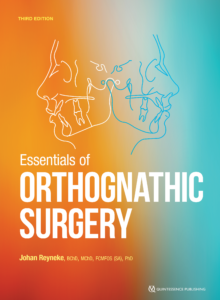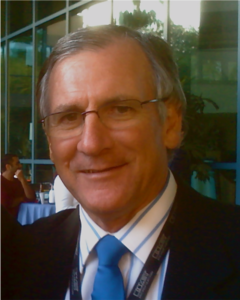“Kids these days!”
 What comes to mind when you hear that phrase? Young people constantly on their phone instead of reading books or newspapers? Someone seeing a piece of tech from the 20th century and ignorantly asking “what’s that?” A youngster fresh out of school who thinks he knows better than those who have been practicing longer than he’s been alive, just because he grew up with the Internet and is well-versed on the most cutting-edge innovations?
What comes to mind when you hear that phrase? Young people constantly on their phone instead of reading books or newspapers? Someone seeing a piece of tech from the 20th century and ignorantly asking “what’s that?” A youngster fresh out of school who thinks he knows better than those who have been practicing longer than he’s been alive, just because he grew up with the Internet and is well-versed on the most cutting-edge innovations?
A common theme among these examples is the role of technology in the separation of the generations. No matter how old you are, there are some products, ideas, and practices that were already outdated when you were entering the workforce, some that became established as you were becoming established as a professional, and some that you’ve had to teach yourself to adapt to in order to continue providing the highest quality of care. Of course, even the most seasoned dentists have a responsibility to keep up with newer technology, especially as it has been proven to improve patient outcomes, but what about teaching older methods to the younger generation?
Even when there are new options available, the learner is lacking if they remain ignorant of the materials and methods that came before them—especially when these methods build the foundation for those that come next. Just because we all carry around calculators in our pockets, it doesn’t mean we shouldn’t know how to add, and even if our devices come with a spell check, we should still know how to spell.
These were the principles at play in the decision to pursue a brand-new edition of Johan Reyneke’s timeless text, Essentials of Orthognathic Surgery. As Prof Reyneke explains, since the orthognathic surgery “renaissance” in the 1970s, our knowledge and understanding of all aspects of orthognathic surgery has increased greatly. However, a thorough understanding of the basic principles of diagnosis and treatment planning, including the development of a cephalometric visual treatment planning and model surgery, still forms the cornerstones of successful treatment. Many years ago, Auguste Comte (1798–1857) said, “One does not know a science completely without knowing its history.”
This is very true. But this book goes far beyond the history of orthognathic surgery. It’s all about the “essentials”—everything a burgeoning oral surgeon needs to know to treatment plan and carry out both basic and complex surgeries involving the lower third of the face.

Drawing and tracing to plan surgical treatment for different situations.
More than two thousand years ago, Cicero (106–143 BCE) recognized the importance of the human face when he wrote, “Everything is in the face … ”. The morphology of the human face consists of relatively few objects: the forehead, two eyes, two cheeks, a nose, and a chin; however, the unique shape, size, and relationships between these objects makes individual facial features recognizable among literally billions of individuals. The face of an individual not only reveals their identity and origin, but a person’s emotions, such as happiness, sadness, fear, anger, and traits such as friendliness. Facial esthetics is often subconsciously associated with character or personality.

Before her orthodontic treatment and orthognathic surgery, this girl was often bullied by her peers about the appearance of her face and jaw.
As Prof Reyneke says, “We don’t just change faces; we change lives.” The stakes are overwhelmingly high, and the clinician must do everything in their power to get it right. Currently, we are privileged to have access to exquisite CT studies with 3D data from our patients, and the surgeon may be tempted to leave the clinical evaluation and treatment planning to the available virtual treatment programs. The computer and technician, however, diagnose by “the numbers.” Farhad Naini in 2011 wrote wisely, “Nowhere in the field of medicine is the fusion of art and science more important than in the clinical assessment of facial esthetics.” As Prof Reyneke explains, “I am convinced that it is essential for the orthodontist and orthognathic surgeon to acquire a basic knowledge of clinical assessment and data analysis and also to develop an artistic eye when diagnosing and planning their patient’s treatment. We should use all the available data obtained from our clinical assessment as definitive diagnostic tool.” In the third edition of Essentials in Orthognathic Surgery, the essential basic principles are used in combination with advanced virtual treatment planning. The reader is taught how to evaluate and analyze the face shapes and landmarks, and how to plan dozens of types of surgery with prediction tracings. Case after case of striking before-and-after comparisons demonstrates the results that can be achieved when these principles are mastered.

Case example of a patient with hemifacial microsomia.
Virtual 3D planning is an incredible tool. There is no doubt that hardware and software will only continue to evolve with greater precision and clarity. Knowing how to use these technologies to their greatest advantage will just become more and more a requisite skill. But they are no substitute for the fundamental knowledge of how a face should look and how the bones and muscles will move during a surgery. There is a reason the first two editions of Essentials have become a favorite reference for orthodontic and surgical residents in training, as well as for practicing oral and maxillofacial surgeons. This third edition will only continue that trend.
Preview the book here.
 Essentials of Orthognathic Surgery
Essentials of Orthognathic Surgery
Johan Reyneke
This long-awaited new edition of the author’s seminal text on orthognathic surgery includes not only a fresh new look and over a dozen new cases, but essential updates for anyone practicing orthognathic surgery. Though many of the surgical practices and techniques have not drastically changed since the previous edition, recent research has inspired new sections on airway management and orthognathic surgery of the temporomandibular joint. The previous chapter on treatment of dentofacial deformities has now been split into two streamlined chapters on typical and complex dentofacial deformities to accommodate new cases and information, allowing a more user-friendly experience for the reader. Those familiar with the second edition will remember the illustrated step-by-step processes for patient evaluation, diagnosis, treatment planning, and surgical technique, and these vital resources have made it to the new text as well. From the most basic bilateral sagittal split osteotomy to complex surgery involving three-dimensional analysis, movement, and rotation of both jaws, this book will help everyone from surgical residents to experienced clinicians in managing both children and adults with dentofacial deformities, improving both function and esthetics.
 Johan P. Reyneke, BChD, MChD, FCMFOS (SA), PhD, is currently the director of the Centre for Orthognathic Surgery in Cape Town, South Africa, Visiting Professor at the University of Amsterdam, and an associate professor in the Division of Oral and Maxillofacial Surgery at the School of Dentistry at the Universidad Autónoma de Nuevo León in Monterrey, Mexico. He holds clinical professorships in the departments of oral and maxillofacial surgery at both the University of Florida in Gainesville, Florida, and the University of Oklahoma Health Sciences Center in Oklahoma City, Oklahoma. Dr Reyneke lectures extensively and has been an invited guest speaker at conferences on five continents. He has published several manuals on surgical technique, written chapters in several oral and maxillofacial surgery textbooks, has authored more than 65 peer-reviewed articles, and is coauthor of the book Introduction to Orthognathic Surgery: A Color Atlas (Ishiyaku EuroAmerica, 1991). Dr Reyneke has served on the national executive committee of the South African Society of Maxillofacial and Oral Surgeons for 14 years and was president for 4 years. He maintained a private practice in Johannesburg, South Africa, for four decades.
Johan P. Reyneke, BChD, MChD, FCMFOS (SA), PhD, is currently the director of the Centre for Orthognathic Surgery in Cape Town, South Africa, Visiting Professor at the University of Amsterdam, and an associate professor in the Division of Oral and Maxillofacial Surgery at the School of Dentistry at the Universidad Autónoma de Nuevo León in Monterrey, Mexico. He holds clinical professorships in the departments of oral and maxillofacial surgery at both the University of Florida in Gainesville, Florida, and the University of Oklahoma Health Sciences Center in Oklahoma City, Oklahoma. Dr Reyneke lectures extensively and has been an invited guest speaker at conferences on five continents. He has published several manuals on surgical technique, written chapters in several oral and maxillofacial surgery textbooks, has authored more than 65 peer-reviewed articles, and is coauthor of the book Introduction to Orthognathic Surgery: A Color Atlas (Ishiyaku EuroAmerica, 1991). Dr Reyneke has served on the national executive committee of the South African Society of Maxillofacial and Oral Surgeons for 14 years and was president for 4 years. He maintained a private practice in Johannesburg, South Africa, for four decades.
